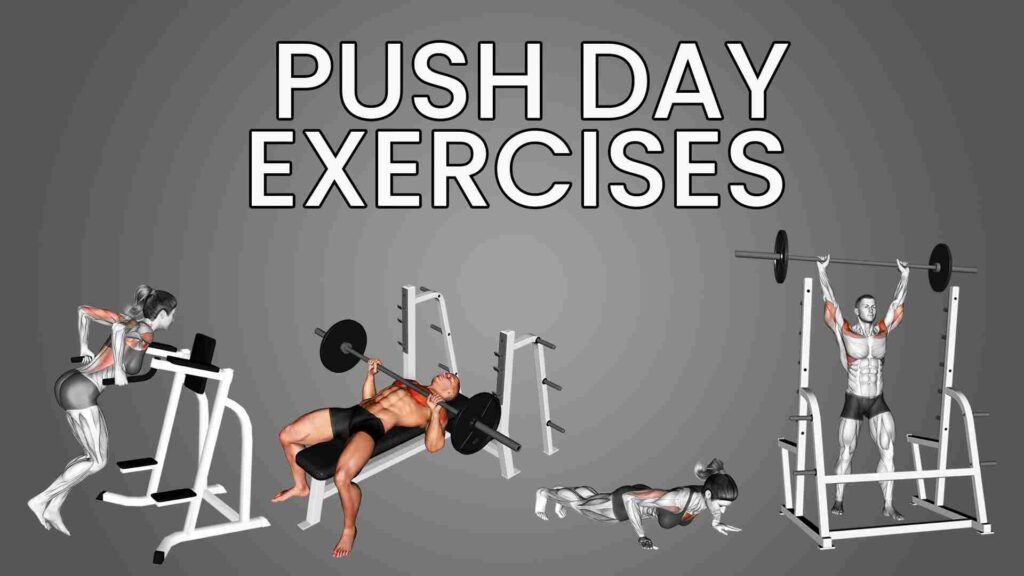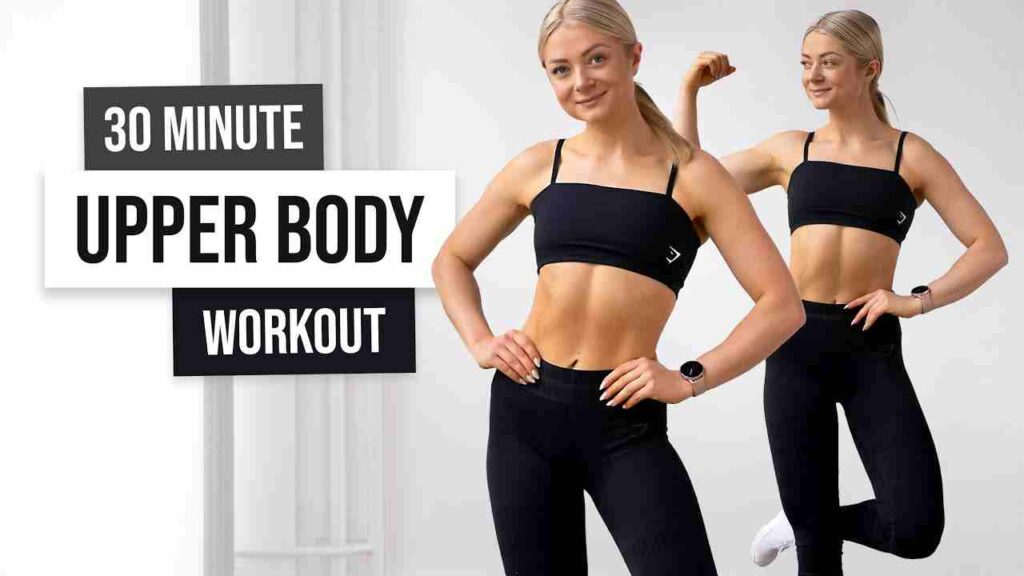Introduction
Are you ready to embark on a transformative fitness journey? Look no further! This comprehensive upper body workout for beginners will guide you through a series of exercises designed to tone and strengthen your arms, chest, shoulders, and back. Get ready to unleash your inner strength and build a foundation for a fit and healthy lifestyle!
Having a strong upper body is not just about aesthetics; it plays a vital role in overall strength, posture, and functional movement. Whether you’re new to the fitness world or looking to switch up your routine, this workout plan will provide you with a solid framework to develop your upper body strength and achieve your fitness goals.
SHOP FOR THE ADJUSTABLE DUMBBELL SET ON AMAZON
Let’s understand why upper body strength matters for beginners and explore the essential exercises that form the foundation of any effective upper body workout.
Why Upper Body Strength Matters for Beginners?
When it comes to starting a fitness journey, many beginners tend to focus solely on cardio exercises or lower-body workouts. While these exercises are undoubtedly important, neglecting the upper body can lead to an imbalanced physique and hinder overall strength and posture. Understanding the significance of upper body strength for beginners is essential in creating a well-rounded workout routine.
Achieving Balance
- The human body thrives on balance and symmetry. Developing a strong upper body helps create a proportional physique, enhancing overall aesthetics.
- A balanced body reduces the risk of muscle imbalances and related injuries, as it promotes proper alignment and posture.
Daily Activities
- Strengthening the upper body improves functional fitness, making everyday tasks easier and more efficient.
- From carrying groceries to lifting children, a strong upper body supports and stabilizes the body during various activities.
Metabolism Boost
- Engaging in upper body exercises increases muscle mass, which leads to a higher metabolic rate.
- Building muscle helps burn more calories throughout the day, even at rest, contributing to weight management goals.
Core Stability
- The upper body includes essential muscles such as the chest, shoulders, back, and arms, which provide support and stability to the core.
- Strengthening these muscles contributes to improved posture and reduces the risk of back pain or discomfort.
Enhanced Athletic Performance
- Upper body strength plays a vital role in numerous sports and physical activities.
- Activities such as swimming, rock climbing, tennis, or even throwing a ball require a strong upper body for optimal performance.
Increased Functional Strength
- Developing upper body strength translates into improved functional strength, enabling you to perform everyday tasks with greater ease.
- Lifting heavy objects, pushing, pulling, and reaching overhead become more manageable when you have a strong upper body.
Improved Bone Health
- Resistance training exercises for the upper body, such as weightlifting, help stimulate bone growth and density.
- By engaging in upper body workouts, beginners can enhance their bone health and reduce the risk of conditions like osteoporosis.
Boosted Confidence
- Building a strong upper body not only improves physical capabilities but also boosts self-confidence.
- As beginners progress and witness their strength increasing, they develop a sense of accomplishment and empowerment.
Essential Upper Body Workout for Beginners
When performing these exercises, remember to maintain proper form and engage the targeted muscles. Start with lighter weights or modifications, gradually increasing the difficulty as you build strength. Here are some essential upper body exercises for beginners:
Push-ups
- Start in a high plank position with your hands slightly wider than shoulder-width apart.
- Keep your body in a straight line from head to toe.
- Lower your chest toward the ground by bending your elbows, then push back up to the starting position.
- Aim for 3 sets of 10 reps.
Tips:
- Modify by performing push-ups on your knees until you build enough strength for full push-ups.
- Focus on maintaining a strong core throughout the exercise.
Working muscles: Chest (pectoralis major and minor), shoulders (deltoids), triceps, and core.
Dumbbell Bicep Curls
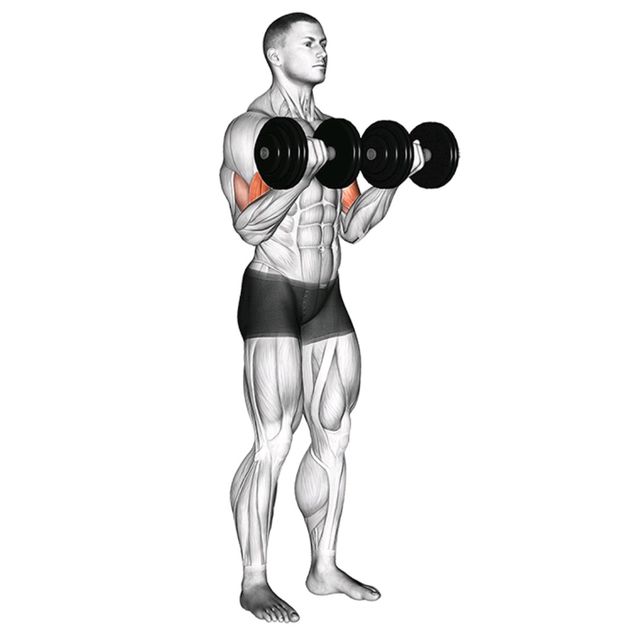
- Stand with a dumbbell in each hand, arms fully extended by your sides, palms facing forward.
- Keep your upper arms stationary, exhale, and curl the weights while contracting your biceps.
- Pause for a moment, then slowly lower the dumbbells back to the starting position.
- Aim for 3 sets of 12 reps.
Tips:
- Use lighter weights to focus on proper form and gradually increase the weight as you progress.
- Avoid swinging your body or using momentum to lift the dumbbells.
Working muscles: Biceps (brachii), forearms (brachioradialis), and stabilizing muscles.
Tricep Dips
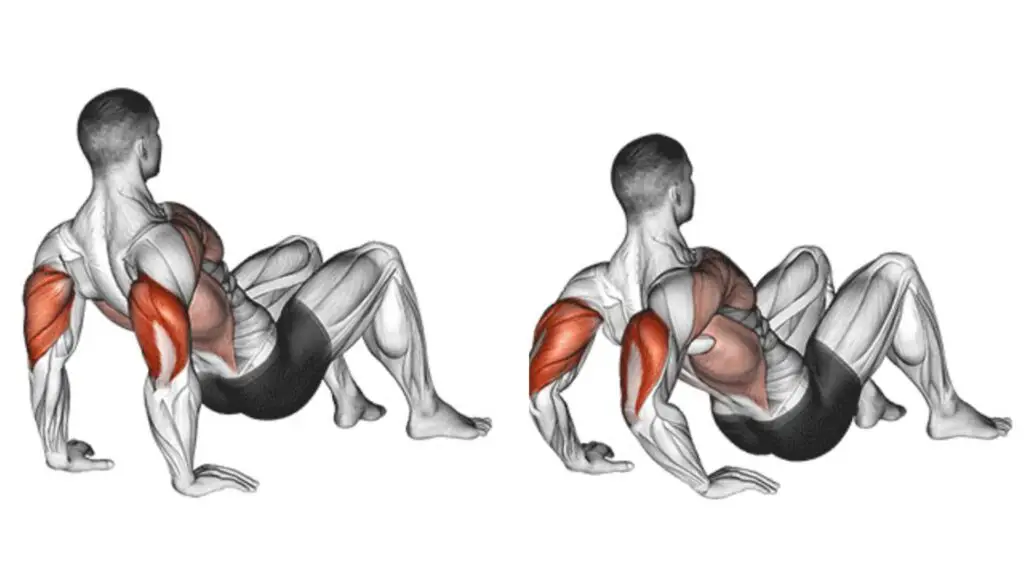
- Sit on a bench or chair with your hands resting beside your hips, fingers pointing forward.
- Slide your glutes off the edge of the bench and support your weight with your arms.
- Lower your body by bending your elbows until your upper arms are parallel to the floor.
- Push yourself back up to the starting position using your triceps.
- Aim for 3 sets of 10 reps.
Tips:
- If you find it challenging, start with bent legs and gradually straighten them as you gain strength.
- Engage your core muscles throughout the exercise to maintain stability.
Working muscles: Triceps, shoulders, and chest (stabilizers).
Shoulder Presses
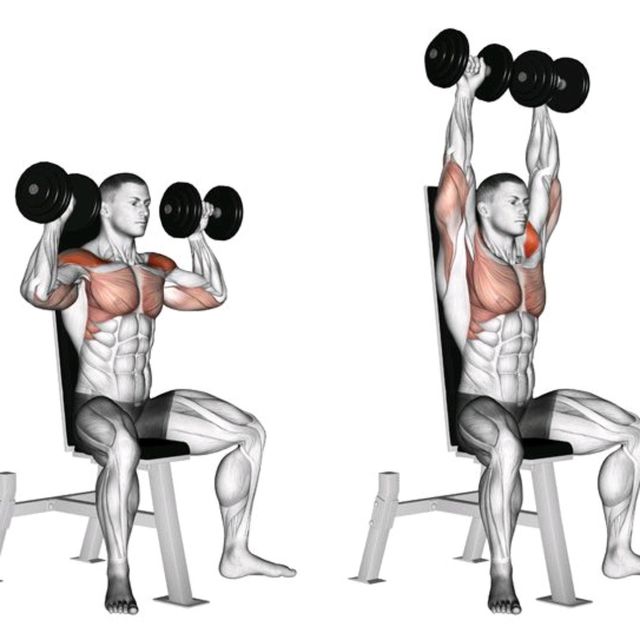
- Hold a dumbbell in each hand at shoulder level, palms facing forward.
- Press the dumbbells upward until your arms are fully extended overhead.
- Lower the dumbbells back to the starting position with control.
- Aim for 3 sets of 12 reps.
Tips:
- Keep your core engaged and maintain a slight bend in your knees for stability.
- Avoid arching your back or locking your elbows at the top of the movement.
Working muscles: Shoulders (deltoids), triceps, upper back (trapezius), and core.
Bent-Over Rows
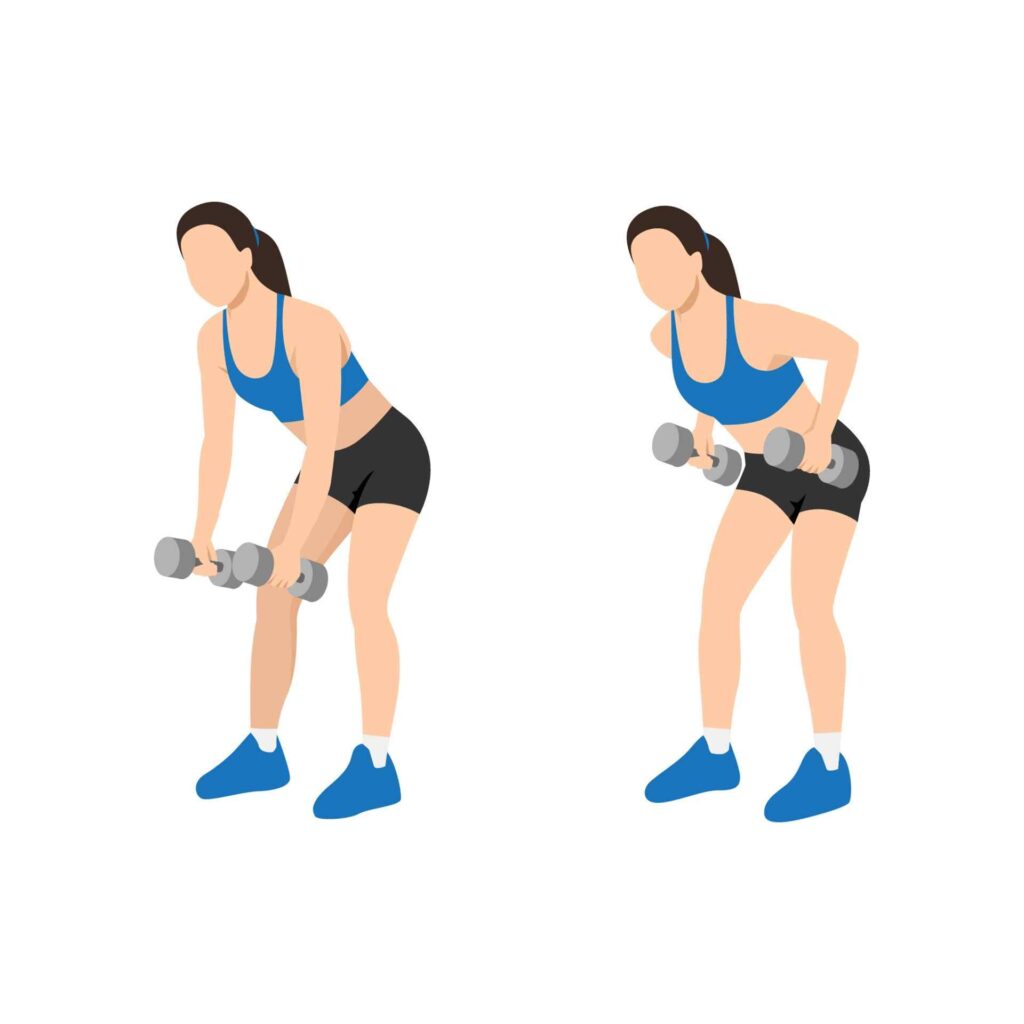
- Hold a dumbbell in each hand, palms facing your body, and hinge forward from your hips.
- Keep your back straight and slightly bend your knees.
- Pull the dumbbells up toward your chest, squeezing your shoulder blades together.
- Slowly lower the dumbbells back to the starting position.
- Aim for 3 sets of 10 reps.
Tips:
- Focus on pulling with your back muscles rather than using momentum.
- Keep your neck aligned with your spine to avoid straining your neck muscles.
Working muscles: Back (latissimus dorsi), shoulders (rear deltoids), biceps, and core.
Chest Press
- Lie flat on a bench or mat with a dumbbell in each hand, palms facing forward.
- Extend your arms straight up, directly above your chest.
- Lower the dumbbells down toward the sides of your chest, keeping your elbows at a 90-degree angle.
- Push the dumbbells back up to the starting position.
- Aim for 3 sets of 10 reps.
Tips:
- Focus on feeling the chest muscles engage throughout the movement.
- Keep your shoulder blades pulled back and down for stability.
Working muscles: Chest (pectoralis major and minor), shoulders (anterior deltoids), triceps, and core.
Lat Pulldowns

- Sit at a lat pulldown machine with your knees secured under the pads.
- Grasp the bar with an overhand grip, hands slightly wider than shoulder-width apart.
- Pull the bar down towards your upper chest, squeezing your shoulder blades together.
- Slowly return the bar to the starting position with control.
- Aim for 3 sets of 12 reps.
Tips:
- Keep your chest lifted and avoid using momentum to pull the bar down.
- Engage your core muscles for stability throughout the exercise.
Working muscles: Back (latissimus dorsi), biceps, rear shoulders, and core.
Lateral Raises

- Stand with a dumbbell in each hand, palms facing your body, and arms by your sides.
- Raise your arms out to the sides until they are parallel to the ground, forming a “T” shape.
- Slowly lower the dumbbells back down to your sides.
- Aim for 3 sets of 12 reps.
Tips:
- Focus on maintaining a slight bend in your elbows throughout the movement.
- Avoid swinging your body or using momentum to lift the dumbbells.
Working muscles: Shoulders (deltoids), particularly the middle deltoids.
Overhead Tricep Extensions
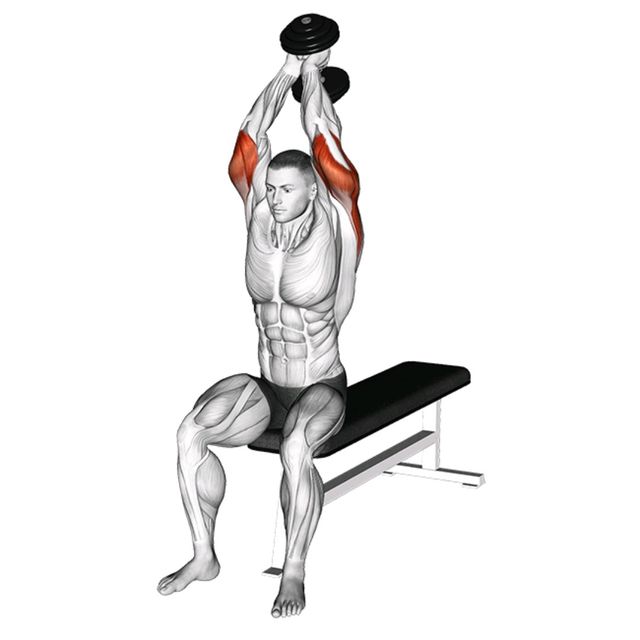
- Stand or sit with a dumbbell held with both hands directly above your head.
- Keeping your upper arms close to your ears, slowly lower the dumbbell behind your head.
- Extend your arms back to the starting position, fully straightening them.
- Aim for 3 sets of 10 reps.
Tips:
- Keep your core engaged and avoid arching your back during the movement.
- Control the movement and focus on feeling the tricep muscles working.
Working muscles: Triceps, shoulders, and core.
Plank Rows
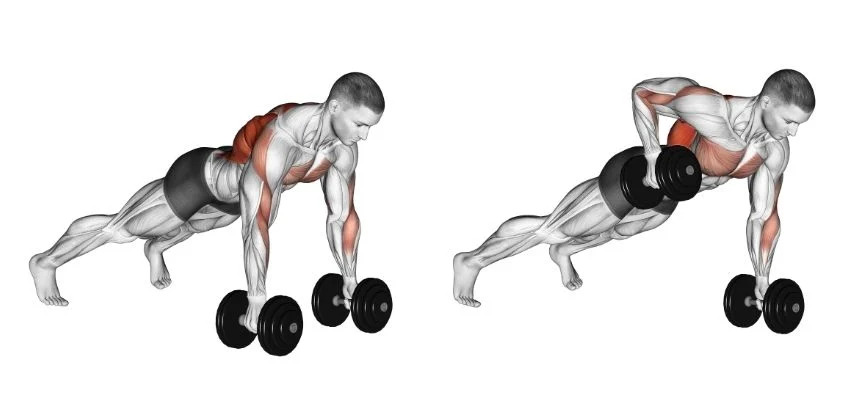
- Start in a high plank position with a dumbbell in each hand.
- Keeping your core engaged, row one dumbbell up toward your side, squeezing your shoulder blade.
- Lower the dumbbell back down and repeat on the other side.
- Aim for 3 sets of 10 reps on each side.
Tips:
- Maintain a stable plank position throughout the exercise.
- Avoid rotating your hips or twisting your torso when rowing the dumbbell.
Working muscles: Back (rhomboids and latissimus dorsi), shoulders, biceps, and core
SHOP FOR THE RESISTANCE BAND ON AMAZON
Remember, it’s essential to listen to your body and adjust the weights or repetitions as needed. As you progress, gradually increase the intensity and challenge yourself with heavier weights or more advanced variations of these exercises.
FAQs
Q.1 How often should I perform this workout routine?
Ans. Ideally, you should aim to perform this upper body workout routine two to three times a week. However, it’s important to listen to your body and allow for adequate rest and recovery between sessions. Consistency is key, but avoid overtraining, as it can hinder your progress.
Q.2 What if I can’t do push-ups yet?
Ans. Don’t worry if you can’t do push-ups initially. It’s a challenging exercise, especially for beginners. You can modify push-ups by performing them on your knees or against a wall to gradually build strength. As you progress, you can gradually work towards performing full push-ups.
Q.3 How do I progress in this workout routine?
Ans. Progression is vital to continue challenging your muscles and making progress. Once you can complete the recommended sets and reps with proper form, you can increase the difficulty by adding more weight, increasing the number of reps, or incorporating variations of the exercises. Additionally, you can decrease the rest time between sets for an extra challenge.
Q.4 Can I do this workout at home without equipment?
Ans. Absolutely! This workout routine can be performed both, at the gym and in the comfort of your home. If you don’t have access to dumbbells, you can use household items like water bottles or resistance bands as substitutes. Bodyweight exercises like push-ups and tricep dips can be highly effective in building upper body strength.
Q.5 How long will it take to see results?
Ans. The time it takes to see results varies from person to person, depending on factors such as genetics, diet, and overall lifestyle. However, with consistent effort and a balanced approach to fitness and nutrition, you can start noticing improvements in your strength, muscle tone, and overall fitness within a few weeks. Remember, progress is a journey, so stay patient and committed to achieving your goals.
Conclusion
In conclusion, the “Ultimate Upper Body Workout for Beginners” provides a comprehensive and effective fitness plan to help you sculpt and strengthen your upper body. By following this workout routine, you will not only enhance your physical strength but also boost your confidence and overall well-being. Remember, consistency is key, so make a commitment to yourself and stick to the routine.
SHOP FOR THE BEST FITNESS TRACKER ON AMAZON
Throughout this article, we have explored the importance of upper body strength for beginners and introduced essential exercises that form the foundation of any successful workout. From push-ups to shoulder presses, each exercise targets specific muscle groups to ensure a well-rounded and balanced routine.

Good day, and welcome to Fitthour. My name is Shubham Vijay, and I am a certified personal trainer and nutrition coach with 6 years of experience in the fitness industry. At Fitthour, we specialize in types of training, such as strength training, cardio, or HIIT, and our mission is to help clients achieve their fitness goals and improve their overall health.

